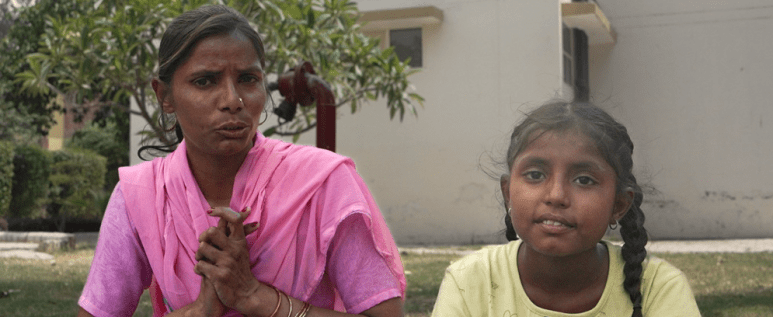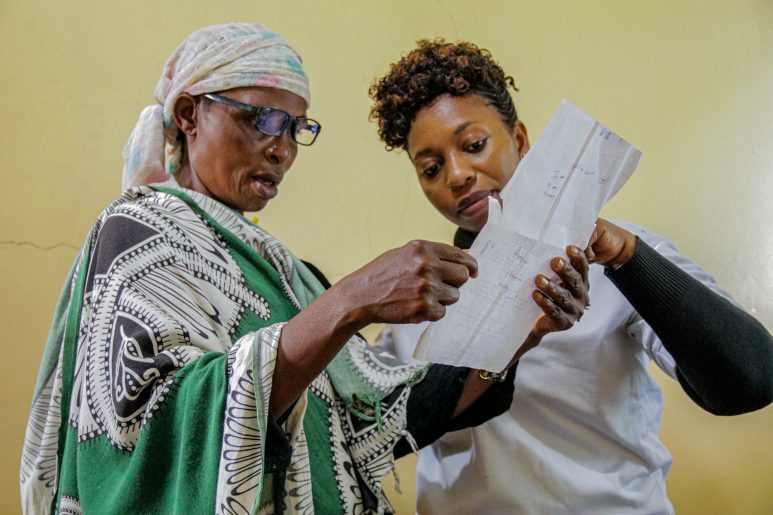A blog post by Penny Lyons, Executive Director, Seva Canada
We are only three now as we left Ken in Kathmandu after a lengthy Seva hug – it’s what we do.
Lhasa has changed considerably since my last visit in 2007 and dramatically since Susan’s last visit in 2004. It is bigger, more developed and goods from everywhere (but mostly China) are available for purchase. There are other, sadder, and much more disturbing changes that would be unwise to write about or even discuss publicly.
Lhasa sits in a bowl surrounded by huge barren mountains (unless they are covered in snow, and some are). Sitting at just under 4000 meters it is crisscrossed by rivers coloured that special blue that only comes from mountain run off. The land is breathtaking beyond the fact of its elevation. It is wild and harsh and difficult but softened by the shaggy faces of the yaks, the ornate and colourful traditional costumes of both men and women and the delicious children with their apple-red cheeks and black eyes.
On this visit we will stay close to Lhasa as time is limited. We visit the Menzikhang Hospital of Traditional Tibetan medicine which is one of Seva’s two principal partners in Tibet, the other being the newly finished Kham Eye Centre in far eastern Tibet.
Despite its name, Menzikhang physicians are as well skilled in western medicine as in eastern. We visit early on a Sunday morning when patients from Lhasa’s seven prefectures come to Menzikhang for treatment of their eye problems. On this morning we see young and old, nomads and city dwellers, men and women. All look frightened and confused by the questions and examinations. People brighten considerably when they see our Western faces as if by virtue of the colour of our skin we are more skilled than the Tibetan doctors. Not likely. Even if we were physicians it would be highly unlikely we would be as adept at treating advanced cataracts as Tibetan doctors – they see them all the time. In the West, advanced cataracts are seen rarely, if at all. We will come back to Menzikhang later in the week after the surgeries have been conducted to interview the patients and tell some of their stories.
Monday morning we drive to Damshong Prefecture, about 3 hours from Lhasa, to visit a screening camp. There is a very strange speed control system on Lhasa’s highways whereby vehicles must register with traffic stations at regular intervals to mark driving time between stations. If we have driven too fast we pull over to the side of the road for five or ten minutes so that when we arrive at the next station it looks as though we have driven at the proper speed. If we exceed the speed limit heavy fines are imposed or licenses revoked. We had a lot of time to stretch our legs and take pictures of the yaks; we must have been driving fast.
Damshong is a purely nomadic area and when we arrive at the hospital about 150 patients have arrived before us. Almost all have come by motorcycle. Ten years ago everyone would have arrived by horse. We get the sense that while bikes are more efficient, the nomads must miss their horses as all have outfitted their bikes with saddle blankets and decorations seen on Tibetan saddles.
The ophthalmologist, optometrist, intern and anesthetist (there to determine how many children will require anesthesia) are setting up the two rooms allotted for the screening. It seems chaotic but everyone has a number and no one seems impatient. Again, faces light up when they see our white skin, then disappointment when told we aren’t doctors, then some renewed interest when the rumour goes around that we are journalists.
Neighbours chatting, children playing, men sitting in the hospital hallways smoking – even with our layman’s eyes we can see why they are here; cataract, strabismus, infection and, in one heartbreaking case of a young teenager, the complete destruction of an eye.
The eye team moves fast and everyone is seen in about 3 hours. Forty- eight people require surgery – the majority for cataract. Only a few choose to be transported back to Menzikhang on the bus, the rest will make their own way there for their scheduled surgery on Wednesday. Examination and surgical costs are covered by a rural insurance scheme, Seva and by Menzikhang Hospital.
The team moves on to a second screening camp in Yanguajing about halfway between Damshong and Lhasa. There, 80 patients are screened and 20 scheduled for cataract surgery.
Tuesday is spent at the Seva Tibet office. Situated just behind the Potala Palace it has the most spectacular view, by far, of any of the Seva offices. There is four staff – Kunga, Dolma, Sonam and Tashi. All are devout Buddhists (some more than others); all are well educated and well spoken. We are lucky to have them. As in Nepal we talk about the current and future programs – what has happened, what is planned and what else is needed. Menzikhang needs to develop its pediatric program, doctors across Tibet and Tibetan areas of China need to be trained, eye camps organized, equipment purchased. The list is endless but significant progress is being made. Seva is still delivering the majority of eye care in Tibet and is growing every year. We have those four to thank for that.
We congregate in my room, in our pajamas, at 6:30 am Wednesday morning. A TV program, filmed at an eye camp in Chamdo and featuring Seva Tibet staff and Seva Canada board member and ophthalmologist Marty Spencer, is going to be aired.
It is in Tibetan, of course, but we don’t care. We see Marty teaching surgical techniques, we see one of the Tibetan doctors being interviewed break down as she describes the patients she treats, we see Sonam and Tashi and Kunga talking about their work (at least we assume that is what they are talking about) and we cheer them all. We are bringing the raw film footage home with us and will find someone to translate.
Later that morning we return to Menzikhang to see the post-operative patients. Even with their eye patches their faces are familiar to us. Here are a few of their stories:
Sonam Tsering is a 65 year old farmer. He was cataract blind in the left eye but he was completely blind because of a corneal opacity in his right eye. He was operated on Tuesday. On Wednesday his vision was checked – 6/6 – perfect! Sonam and his wife were overwhelmed with joy. He said his life has been given back to him. He can farm his land and get out of the house to visit his friends in the village.
Sakyi is a 6 year old nomadic girl from Nakchu (about 300km north of Lhasa). She had congenital (from birth) cataracts in both eyes and her vision was deteriorating rapidly. Sakyi loves to read cartoon books in her free time. This summer her parents noticed that Sakyi was struggling to read and was bringing her book very close to her face. They took her to an eye camp being held in Nakchu where she was diagnosed with cataract and referred to Menzikhang. On Tuesday she had the cataract removed from her left eye. She will have an operation on her right eye in November. Sakyi is looking forward to getting back to her books and being able to play as freely as her friends.
Danba Dolma is an 11 year old nomadic girl who was referred from the Damshong screening camp. She is tiny and looks closer to six years old rather than eleven. She had congenital, bilateral (both eyes) cataracts and is also hard of hearing. Danba didn’t start school until her left eye was operated on earlier this year and an intraocular lens inserted. She is now in grade one. Because Danba was blind for so many years she developed amblyopia (lazy eye) in her right eye. The cataract will be removed but further treatment for the amblyopia, performed by Menzikhang’s pediatric ophthalmologist, will be done to improve her vision. Danba’s vision will always be poor but she will see and be able to live an independent life.
Today we are in Chengdu enroute to Vancouver. I think I speak for Susan and Annie, as well as myself, when I say the past 16 days have been a privilege. We have seen the results of our donor’s and supporter’s generosity up close and personal. We have reaped the rewards of shy smiles, clasped hands, warm embraces, faces filled with joy, laughter and deep and profound gratitude. From us, and the people we serve, we thank you.






